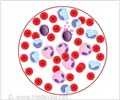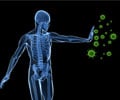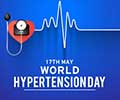Information about Enasidenib
Generic Name : EnasidenibUp-to-date prescription details regarding Enasidenib are provided here.
Pronunciation : en-a-SID-a-nib
Learn the correct pronunciation of the Enasidenib, understand it's uses, recommended dosages, its indications, how to take, when to take, when not to take, side effects, special precautions, warnings and its and its storage instructions.You will also find a list of the medication's International and Indian brand or trade names, as well as its pricing information. For verification of the information presented on this page or for additional clarifications, it's advisable to consult your doctor.
Therapeutic Classification : Chemotherapy
Trade Names/Brand Names of Enasidenib
India :
IDHIFA
Overview of Enasidenib
• Enasidenib tablets for oral use were approved by the US FDA in 2017 to treat adult patients suffering from acute myeloid leukemia.Why is Enasidenib Prescribed? (Indications)
Enasidenib is an isocitrate dehydrogenase 2 inhibitor. It is prescribed to treat acute myeloid leukemia in adult patients who have not responded to treatment or relapsed following treatment and are positive for isocitrate dehydrogenase-2 mutation as detected by an FDA approved test.Acute myeloid leukemia is a type of cancer that that arises from the white blood cells. Enasidenib works by either reducing or blocking the growth of the cancer cells.
When should Enasidenib not be taken? (Contraindications)
Enasidenib should not be used in• Patients with allergy or hypersensitivity to enasidenib
• Pregnant or breastfeeding women
• Patients on fertility therapy
• Liver disorders
• Children below 18 years of age
What is the dosage of Enasidenib?
• The recommended adult dose in treating acute myeloid leukemia is 100 mg once a day.• The treatment should be continued for at least 6 months unless the disease progresses or the patient experiences unacceptable toxicity.
How should Enasidenib be taken?
• Enasidenib is available in tablet form which should be taken by mouth either with or without food.• The tablets of enasidenib should be taken around the same time every day.
• If the patient vomits out the tablet, it is advised to take another dose on the same day as soon as possible and continue with the regular dose from the next day.
• Swallow the tablets as a whole with sufficient quantity of water and care should be taken that the tablets should not be crushed or opened.
What are the warnings and precautions for Enasidenib?
• Regular monitoring of blood parameters is advised, once before and then during treatment. If differentiation syndrome is suspected treat with systemic corticosteroids along with continuous monitoring. Differentiation syndrome is a condition associated with rapid proliferation and differentiation of the myeloid cells. The patient may suffer from symptoms of fever, breathing difficulty, weight gain, swelling of legs, liver or kidney damage. The condition can cause multi-organ failure and is potentially fatal.• Treatment with enasidenib tablets must be discontinued if severe respiratory symptoms or kidney dysfunction occur and the patient should be treated appropriately with adequate medical care.
• Hydroxyurea can be used to treat noninfectious leukocytosis (increase in white blood cell count in the absence of infection) that occurs during enasidenib therapy and the treatment with enasidenib can be stopped if the leucocytosis does not resolve.
• Stop the treatment temporarily and then resume with a low dose of enasidenib (50mg/ day) if tumor lysis syndrome occurs. Tumor lysis syndrome is a side effect of cancer treatment and occurs due to the breakdown of a large number of cancer cells and the release of their contents into the blood. It can cause kidney failure and cardiac rhythm abnormalities. The dose can be increased to 100 mg a day when the toxicity reduces to grade 1 or lower.
• Reduce the dose to 50mg per day if the bilirubin levels increase to more than three times the normal in absence of liver disease.
• Male and female patients with reproductive potential are advised to use effective contraceptive measures during the enasidenib treatment and to continue the same until 1 month after the last dose. Enasidenib may interfere with the effect of oral contraceptives, therefore additional contraception is advised during treatment.
What are the side effects of Enasidenib?
Common: Increased level of bilirubin, reduced calcium or potassium levels in blood, nausea, vomiting, diarrheaGastrointestinal: Loss of appetite, stomach pain
Cardiovascular: Irregular heart rhythm
Respiratory: Difficulty in breathing, hypoxia, acute respiratory distress syndrome, pulmonary edema (fluid accumulation in the lung), lung failure
Blood: Differentiation syndrome, non-infectious leucocytosis
Skin: Yellowish coloration of the skin, rashes, itching, blistering or peeling of the skin
Others: Fever, jaundice, weight loss, tumor lysis syndrome, taste disturbances, increased blood uric acid levels, reduced phosphorous levels in the blood
What are the other precautions for Enasidenib?
• Do not stop taking or alter the dose without physician’s advice.• Drink plenty of water or any other fluids as advised while on enasidenib treatment.
• Women of childbearing age should take a pregnancy test before enasidenib therapy and can continue the treatment only if the test shows negative.
• Call for emergency help if the victim is not breathing or collapsed.
What are the Drug Interactions of Enasidenib?
• Enasidenib may alter the concentration of combined hormonal contraceptives when taken together, therefore additional contraceptive measures are required.• Enasidenib could interact with several drugs and the physician should be consulted before taking any prescription drugs, over-the-counter drugs or herbal supplements while on treatment with enasidenib.
What are the storage conditions for Enasidenib?
• Keep enasidenib tablets in the original container and store at a room temperature between 20°C and 25°C.• Keep the tablet container tightly closed with a desiccant inside to protect from moisture.
• Keep away from the reach of children.








